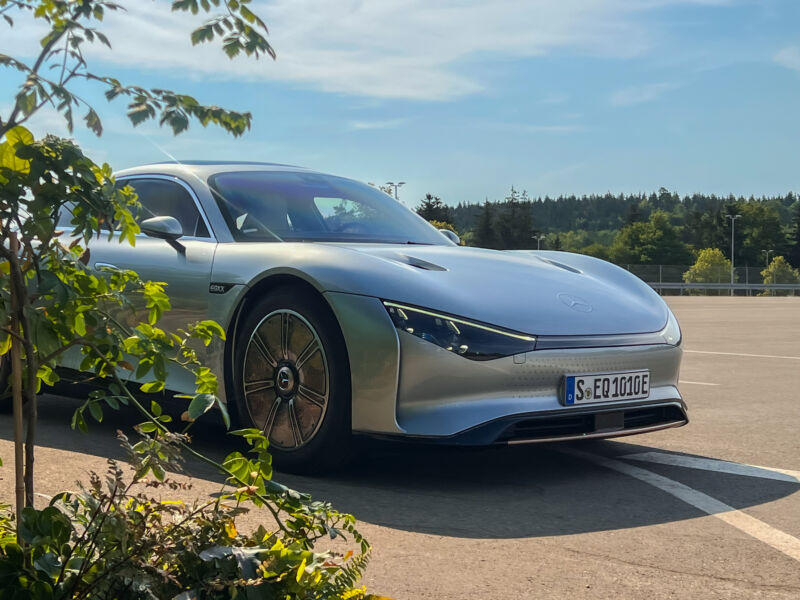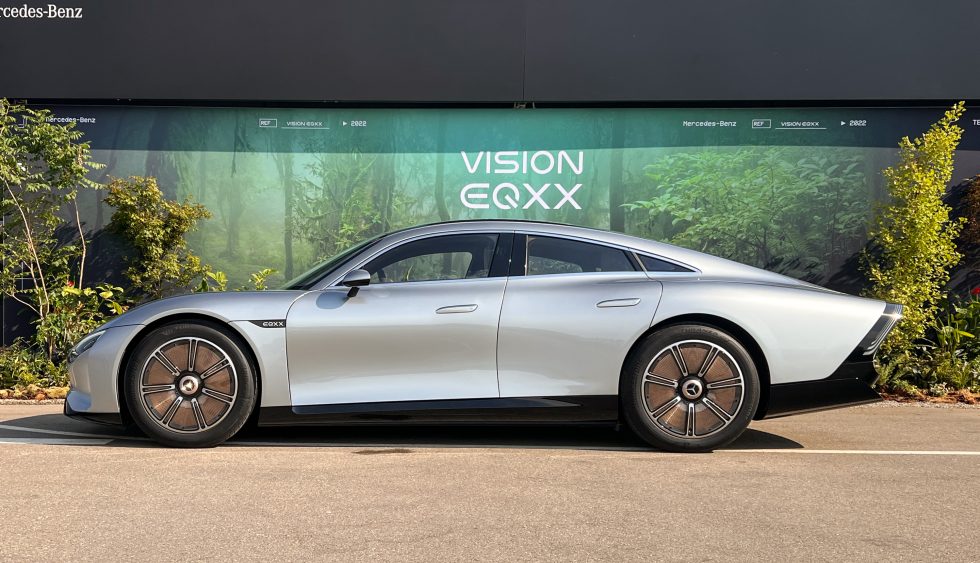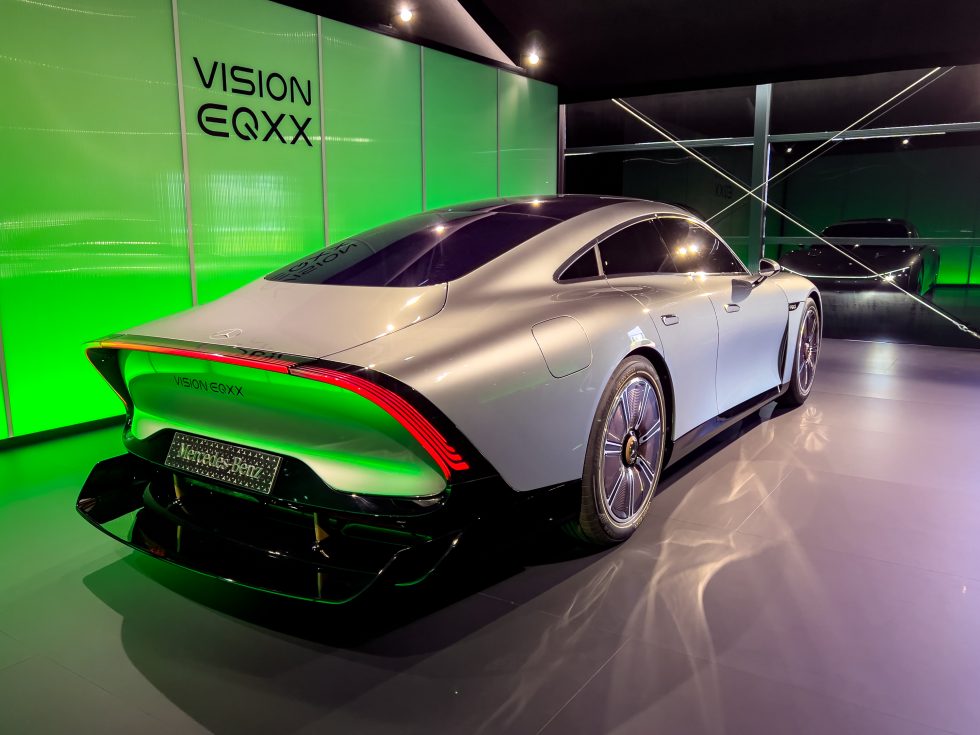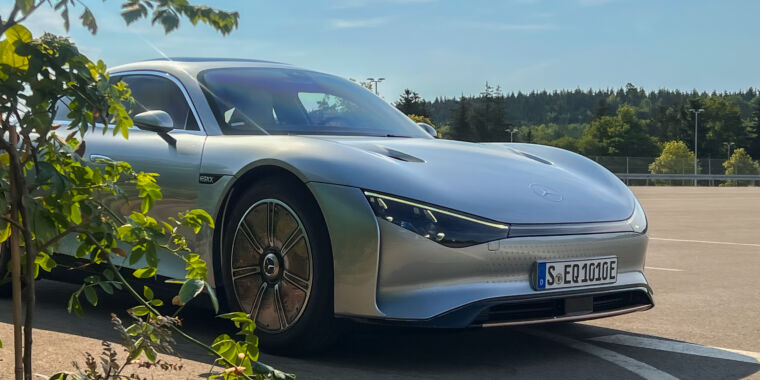
Jonathan Gitlin
IMMENDINGEN, GERMANY—Driving off in the Mercedes-Benz Vision EQXX was slightly more stressful than I anticipated. Not that it’s difficult to drive, or to see out of the low-slung streamliner, but it’s also the only one in existence. Mercedes wouldn’t tell us the program’s exact budget, simply warning us that the sole EQXX should be considered priceless, but I’d guess somewhere in the range of three Bugatti Pur Sports.
Like the Bugatti, the EQXX was built to an engineering brief—in this case to build an electric vehicle capable of at least 621 miles (1,000km) on a single charge. Also like the Bugatti, it’s road-legal: in April of this year, less than two years after the project was given the green light, the team drove the EV 625 miles (1,006 km) from Sindelfingen in Germany to Cassis, France, arriving with a 15 percent state of charge in the battery.
Two months later, they followed that up with a longer drive that involved descending down fewer mountains, driving from Stuttgart, Germany to the Silverstone racetrack in the UK, where reigning Formula E champion Nyck de Vries then used the remaining charge to drive some hot laps, the car eventually completing 747 miles (1,202 km) before coming to a halt in the pit lane.
But this is not Bugatti and there are no plans for a low volume production run, not even at eye-waveringly expensive prices. The Vision EQXX is a one-off, a concept car come to life, but more fully realized than any other concept I’ve yet encountered. A pure engineering exercise or world record breaker wouldn’t bother with a functional infotainment system that uses a single 44-inch 8k display, nor a completely trimmed interior, even if it is one that uses a cactus fiber fabric instead of leather, bamboo fiber carpets, and a biotech-derived silk, among other innovations.
And despite the priceless nature of this low-drag EV, Mercedes let Ars drive it.

Jonathan Gitlin
As you might guess from the way it looks, the Vision EQXX’s shape is more than a little aero-optimized. About 62 percent of the work the motor has to do is fighting against air resistance, after all. It’s a smaller car than it seems from the pictures—about a foot shorter than the production EQS at 195.9 inches long. And that includes the long overhanging nose and tail, so the Vision EQXX’s wheelbase is actually compact car-short, at 110.2 inches (2,800 mm).
A narrow 73.6-inch (1,870-mm) width and low 53.1-inch (1,348-mm) roofline give the car a rather small frontal area—22.8 sq ft (2.12 m2)—and frontal area works with the drag coefficient, which in this case is just 0.17, which makes it one of the lowest-drag cars ever made.
From the nose to the C pillar it might remind you of the Porsche Taycan, a very slippery customer itself. The door handles retract flush to the doors, or at least they do up front; the rear doors don’t open, one of the few tells that this really is a concept and not a production car.
The side view mirrors are of a size you might expect to find on a racing car rather than something wearing a license plate, but they work well enough. Which is good, because there’s no rear window. Instead that space, and the roof too, is given over to a 300 w solar array that feeds into the car’s 12 V battery which like the traction battery is also lithium ion. (Since the priceless one-off will never be left parked outside for very long, Mercedes didn’t bother adding the extra gubbins that would allow the panel to trickle-charge the traction battery.)
From the rear wheels back, it’s like little else, other than perhaps the Lightyear Solo. When parked, the lower part of the tail retracts into the bodywork, extending out when the car’s onboard brain decides its more efficient to do so.

Jonathan Gitlin








